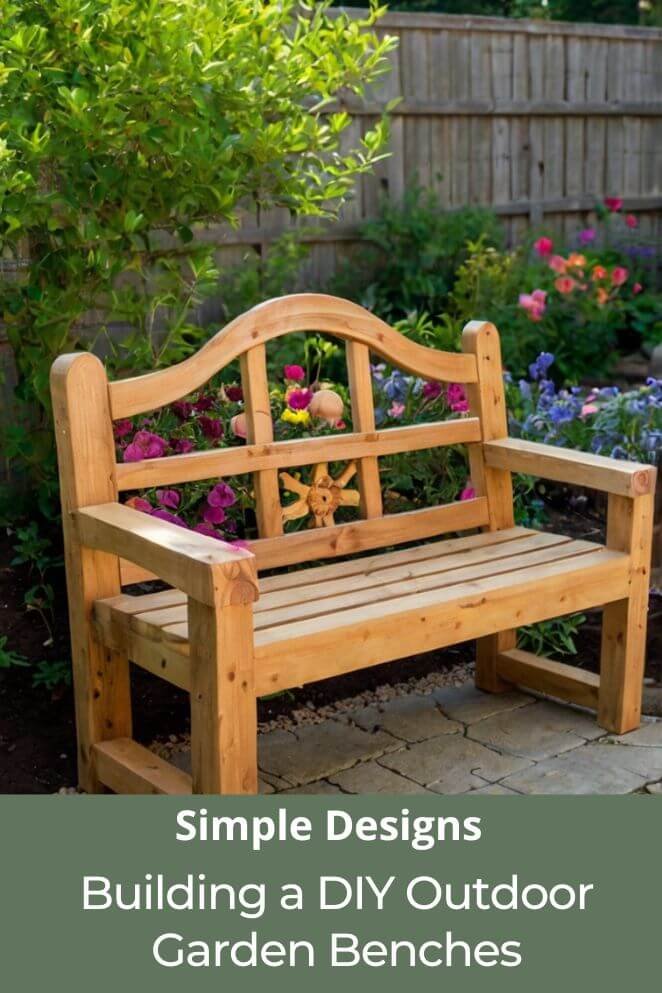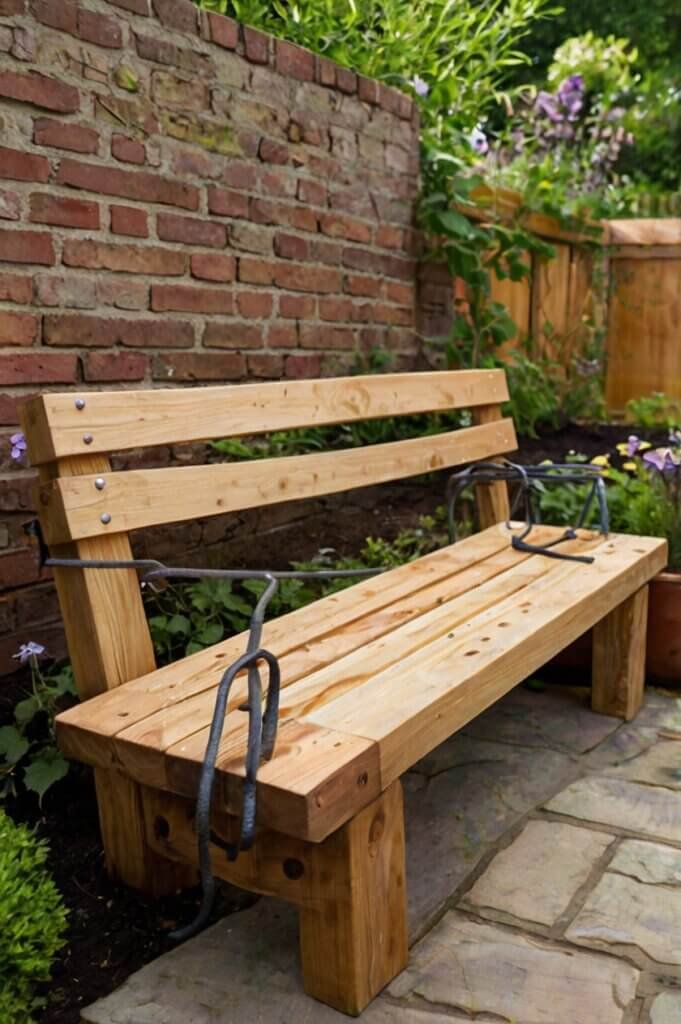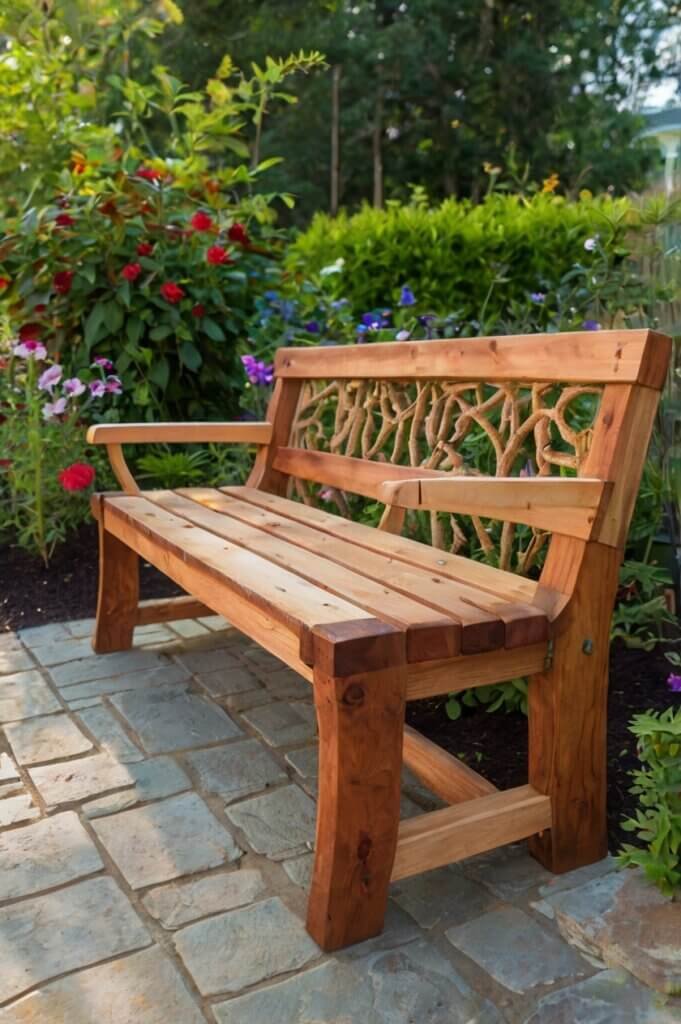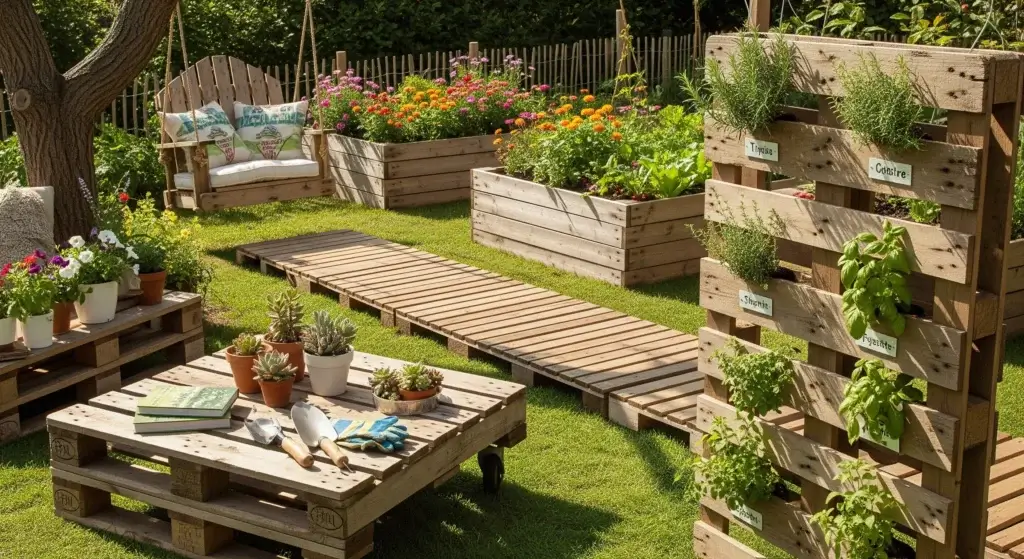
Building your own garden bench is a rewarding project that lets you customize every detail—from the materials to the finishing touches.
Unlike store-bought benches, a DIY bench can be tailored to match your garden’s look and fit perfectly in your space.
It’s also a fun way to add a personal, unique touch to your garden without the high cost of buying a ready-made bench.
Plus, you’ll have the satisfaction of creating something with your own hands!
Benefits of Building a DIY Bench
Building your own garden bench has several great benefits:
Cost savings
DIY benches are typically much cheaper than buying one.
While store-bought benches can range from $100 to $500, making your own can keep costs under $100 for the materials.
- Read also: Upcycle Your Garden: Creative DIY Plant Stands from Pallets
- Read also: Seal the Deal: Easy DIY Methods for Plant Pot Drainage
Customization
When you build your bench, you can choose the exact size, design, and materials that match your garden’s look and your personal style, ensuring a perfect fit for your space.
Skill development
If you’re new to woodworking, this project is a great way to learn new skills.
Plus, there’s a real sense of pride and accomplishment when you finish a project you’ve created yourself.
Environmental impact
You also have the option to use eco-friendly or reclaimed materials, which helps reduce waste and lowers your impact on the environment.

Planning and Preparation
Before diving into construction, a little planning goes a long way.
Start by identifying the style and purpose of your bench.
Will it be a simple, rustic bench or a polished, comfortable seat with a backrest?
Choosing the right wood
Choosing the right wood for your garden bench is key to making sure it lasts, especially since it’ll be outdoors.
Here’s a look at some popular options:
- Cedar: Cedar is a great choice for outdoor projects because it naturally resists rot and insects, so it holds up well in different weather conditions.
- Redwood: Like cedar, redwood is resistant to decay and very durable. It also has a warm, rich color that adds a nice touch to any garden.
- Pine: Treated pine is more affordable and can work well, but it might need a bit more upkeep to keep it looking good over time.
- Teak: Teak is a premium wood known for its beauty and toughness. It’s highly resistant to weather but can be more expensive than other options.
Essential tools
You don’t need an extensive tool collection for this project. Here are the essentials:
- Saw (hand saw or power saw)
- Power drill
- Sandpaper or electric sander
- Measuring tape
- Screwdriver
- Wood glue
- Paintbrush (if finishing with stain or sealant)
Design considerations
When designing your garden bench, think about how it will look in your garden and how many people it should comfortably seat.
Here are some helpful design tips:
- Size: Decide how many people you’d like to seat. Most garden benches are around 4 to 5 feet wide, which comfortably seats two to three people.
- Height: Aim for a seat height of about 16 to 18 inches off the ground. This makes it comfortable for most people to sit and get up easily.
- Backrest: Consider whether you want a backrest for added comfort or if a simple flat seat works best for your space and style.
Sketching your design
Start with a rough sketch of your bench, marking the dimensions and any features like armrests or storage underneath.
Adding these details early can help you plan better and create a bench that perfectly suits your needs.

Step-by-Step Building Guide
Now, let’s dive into the building process!
Step 1: Cutting the wood
Start by cutting your wood pieces based on your design sketch. Generally, you’ll need:
- Four legs
- Frame pieces for the seat
- Extra pieces if you want a backrest
Make sure to cut everything accurately so the bench stays stable and comfortable.
Step 2: Assembling the frame
Next, put together the frame for the bench seat:
- Use wood screws or bolts to securely connect the frame pieces.
- Add a little wood glue at the joints for extra durability, but don’t go overboard, as too much glue can create a mess.
Step 3: Adding the seat and backrest
Now, attach the seat slats to the frame, spacing them evenly.
If your design includes a backrest, secure it to the frame with screws and bolts to make it sturdy.
Step 4: Finishing touches
To finish, smooth out any rough edges by sanding the entire bench.
Apply a weatherproof sealant or paint to protect the wood from rain and sun.
You can also use wood stain if you want to add a specific color that complements your garden.
Customization Ideas

Customizing your own garden bench allows you to make it truly unique and suited to your style.
Here are some ways to make it your own:
- Read also: DIY Greenhouse Trellis: Transform Your Garden Space
- Read also: Elevate Your Space: DIY Hanging Gardens for Small Spaces
Personalizing your bench
Add special touches to make the bench feel personal. You might:
- Carve initials, names, or simple designs into the wood.
- Paint it a color that complements your garden’s style.
- Use stencils to add decorative patterns that reflect your personality or garden theme.
Creating a cozy seating area
Turn your bench into a cozy retreat by adding a few extra touches:
- Cushions or throws: Choose weather-resistant fabrics to add comfort and bring in a pop of color.
- Lighting: Set up solar-powered lights nearby, or attach LED strips under the bench for a warm glow in the evening.
- Planters: Place some potted plants around the bench, or put planter boxes at either end to blend the bench with your garden’s greenery.
Final Thoughts
Building a DIY garden bench is an accessible and rewarding project that brings both aesthetic and functional value to your garden.
From choosing the right wood to adding finishing touches, each step lets you create a unique piece of furniture.
Whether you’re building it as a quiet spot to enjoy your morning coffee or as a gathering place for friends, a homemade garden bench will be something you can cherish for years to come.
FAQs
Cedar, redwood, and treated pine are popular choices due to their durability and resistance to outdoor elements.
Yes, it’s possible, though using power tools can make the process faster and more efficient.
Depending on materials and design, you can build a garden bench for as little as $50 to $100.
Sealing or staining the wood is highly recommended to protect it from weather damage and prolong its life.
Yes! By modifying the frame, you can add storage compartments or a lift-up seat for extra functionality.



